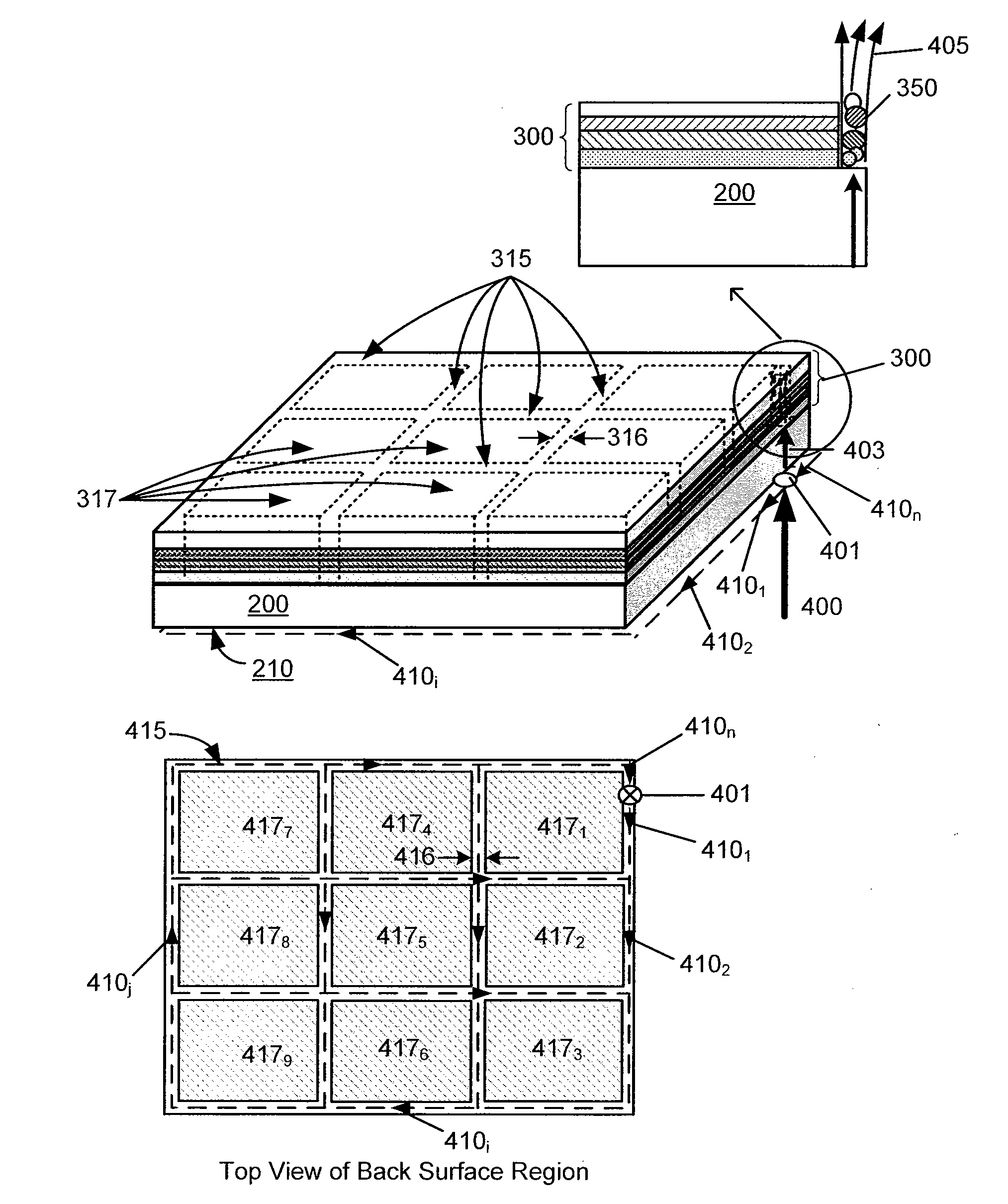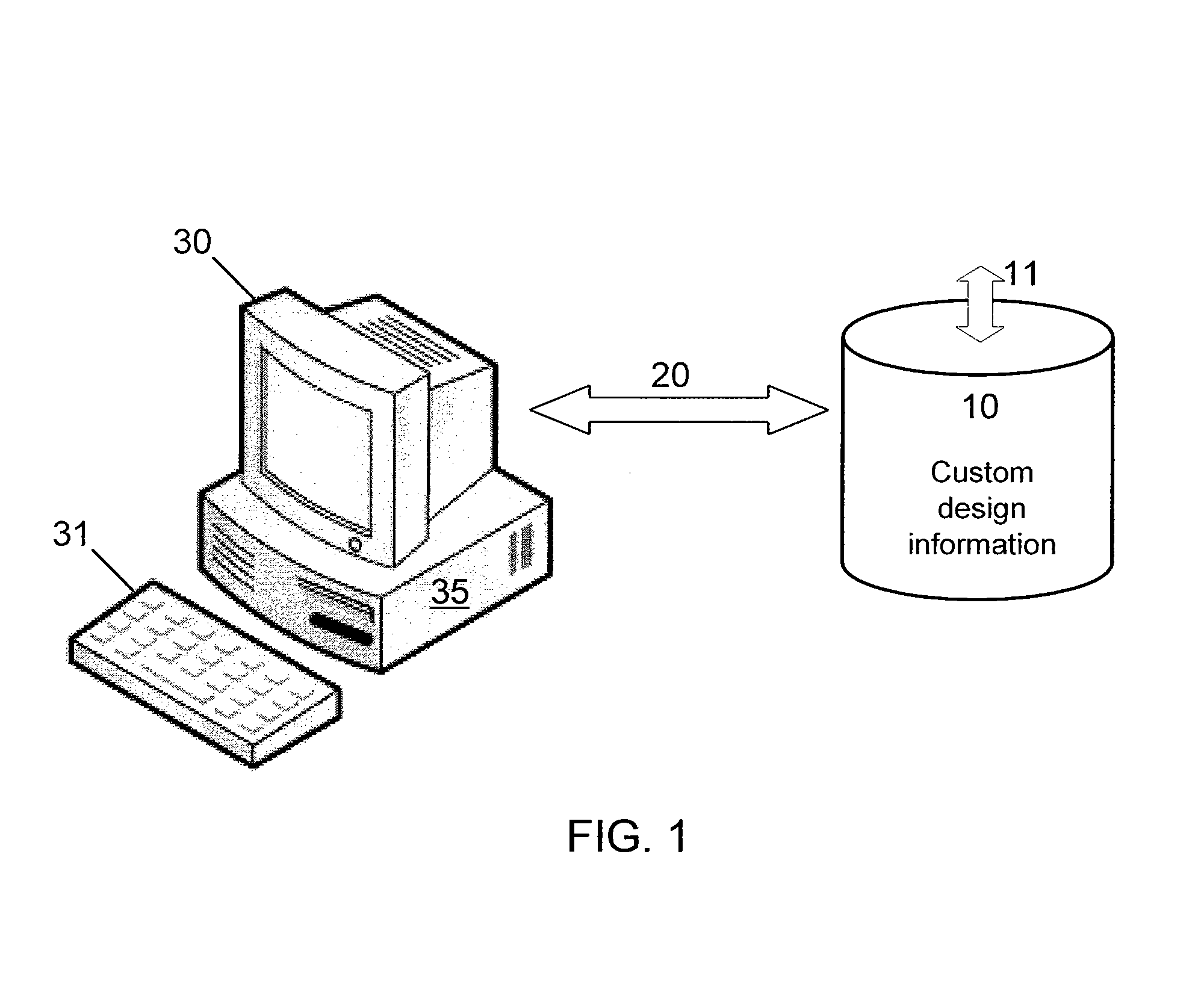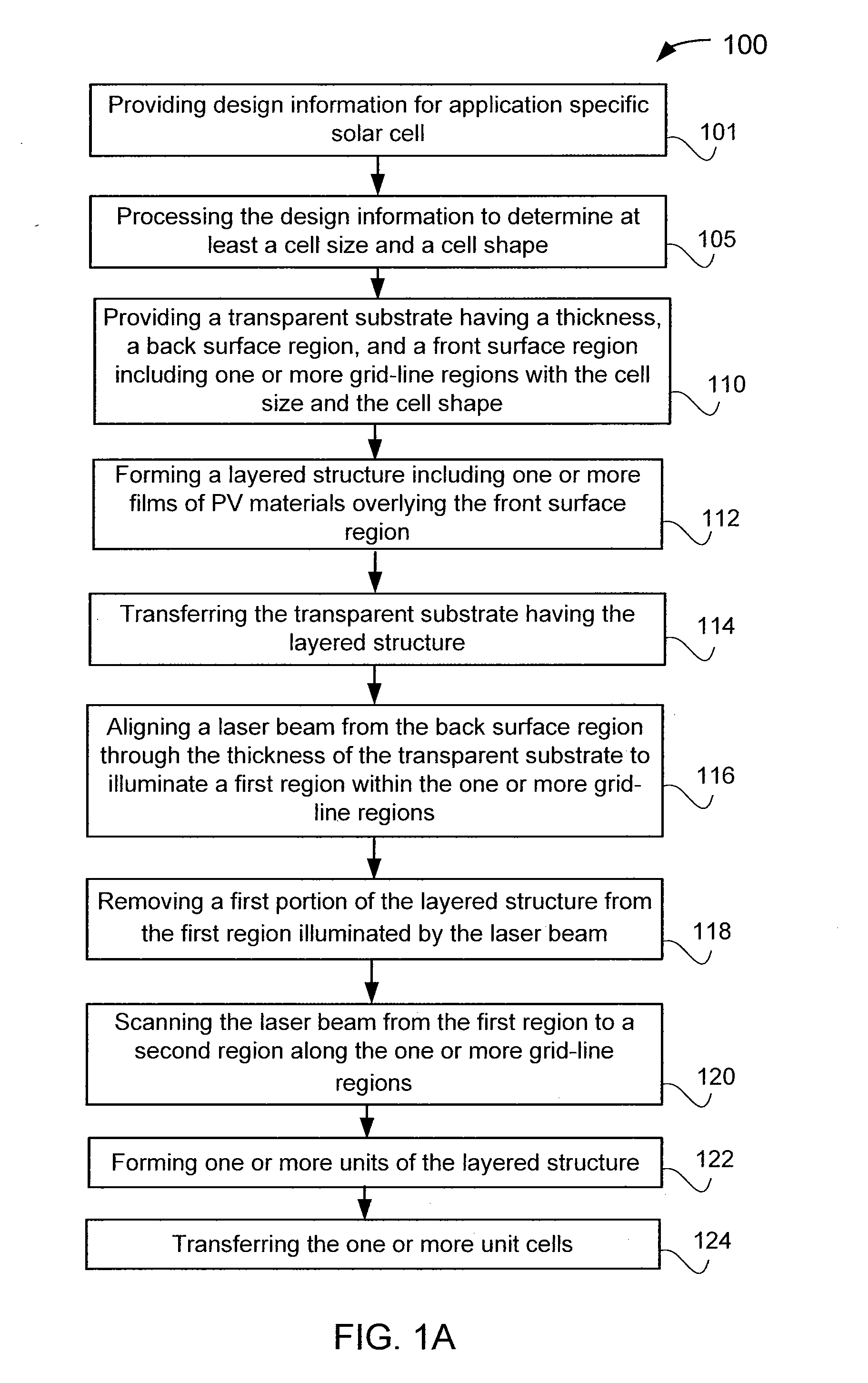Application specific solar cell and method for manufacture using thin film photovoltaic materials
a technology of photovoltaic materials and solar cells, applied in the field of photovoltaic materials, can solve the problems of wasting energy, reducing the efficiency of solar energy conversion, and reducing the efficiency of sunlight conversion into electrical power, so as to achieve easy control and automation of laser beam scanning operations, and improve the efficiency of sunlight conversion. , the effect of increasing the efficiency of sunlight conversion
- Summary
- Abstract
- Description
- Claims
- Application Information
AI Technical Summary
Benefits of technology
Problems solved by technology
Method used
Image
Examples
Embodiment Construction
[0023]The present invention relates generally to photovoltaic materials. More particularly, the present invention provides a method and system for design and manufacture of a solar module using a laser separation process for forming one or more unit cells from continuous layered structure of photovoltaic materials. Merely by way of example, the present method and structure have been implemented to manufacture an application specific thin film solar cell having single or multi junction photovoltaic materials, but it would be recognized that the invention may have other configurations.
[0024]FIG. 1 is a simplified diagram illustrating a computer configured to receive a custom design information stored in a database according to an embodiment of the present invention. This diagram is merely an example, which should not unduly limit the scope of the claims herein. As shown, a database 10 is established for storing a plurality of custom design information data. In one embodiment, the data...
PUM
 Login to View More
Login to View More Abstract
Description
Claims
Application Information
 Login to View More
Login to View More - R&D
- Intellectual Property
- Life Sciences
- Materials
- Tech Scout
- Unparalleled Data Quality
- Higher Quality Content
- 60% Fewer Hallucinations
Browse by: Latest US Patents, China's latest patents, Technical Efficacy Thesaurus, Application Domain, Technology Topic, Popular Technical Reports.
© 2025 PatSnap. All rights reserved.Legal|Privacy policy|Modern Slavery Act Transparency Statement|Sitemap|About US| Contact US: help@patsnap.com



